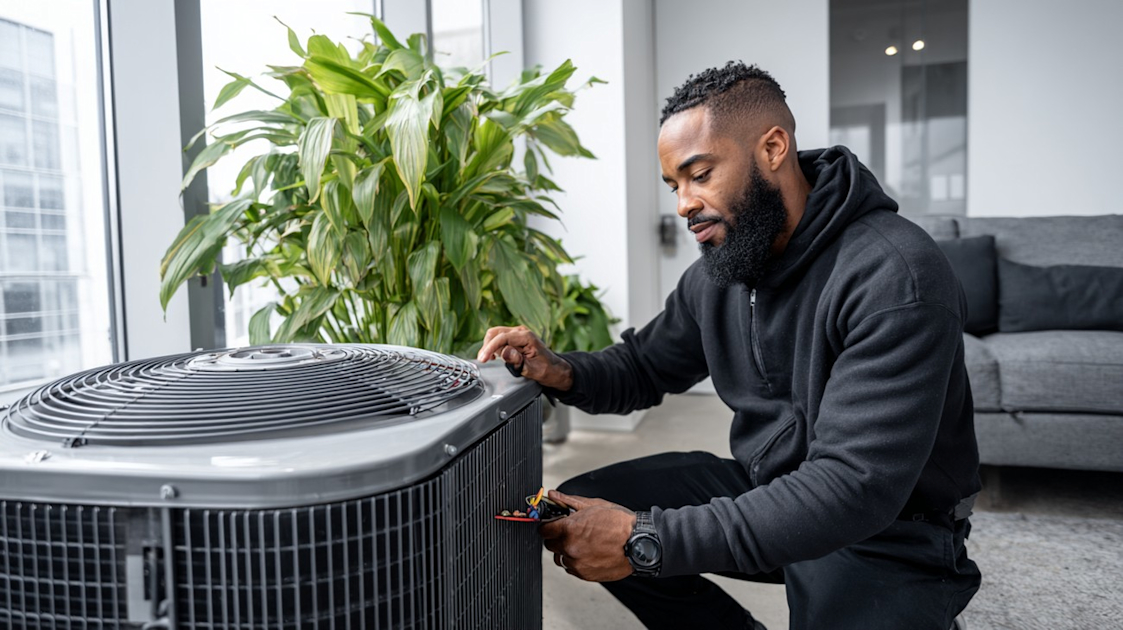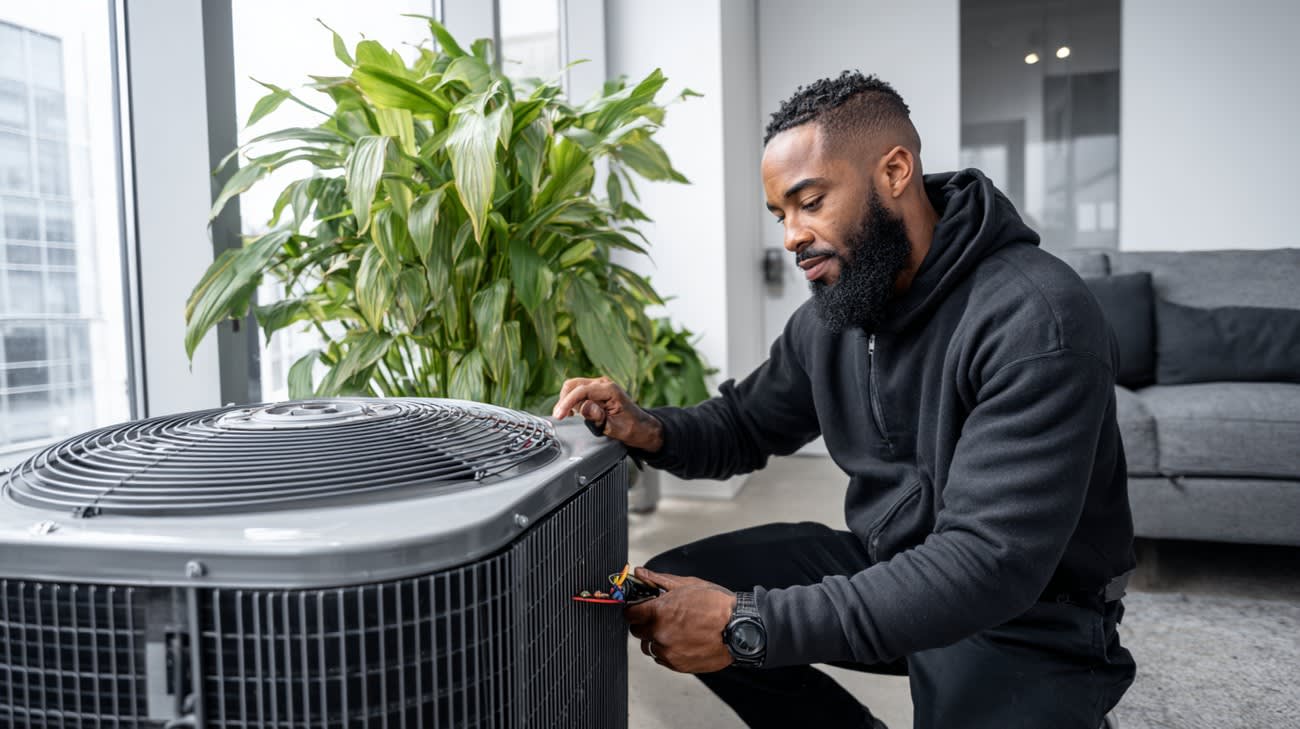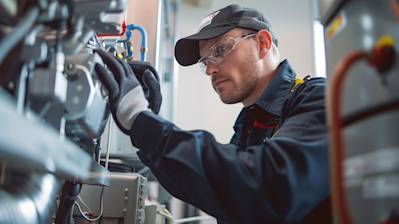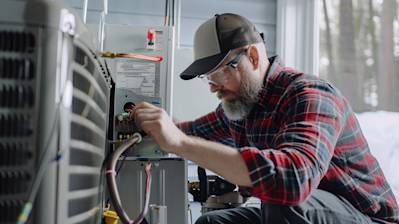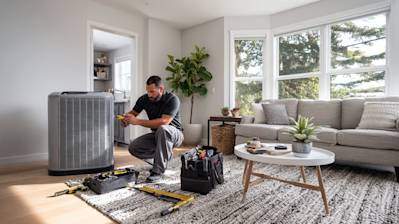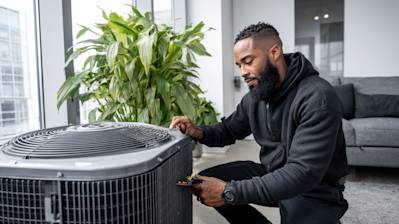Air conditioning systems are a modern necessity, providing comfort during hot seasons. However, a common issue that can compromise their efficiency and performance is refrigerant leaks. In this blog post, we'll take an in-depth look into AC leak repair, exploring the causes, signs, and preventive measures to tackle this problem effectively.
Understanding AC Refrigerant Leaks
Refrigerant leaks in AC systems occur when the sealed systems designed to contain the refrigerant develop faults. It’s crucial to understand that refrigerant itself doesn’t get used up, so if your AC isn’t cooling properly, a leak is the likely culprit. These leaks can harm efficiency, lead to higher energy bills, and even damage the environment.
Signs Your AC System Has a Leak
Identifying a refrigerant leak early can save you money and prevent further damage to your system. Here are some tell-tale signs:
- Higher Energy Bills: A sudden spike in your energy consumption can indicate your AC is working overtime due to a refrigerant leak.
- Inefficient Cooling: If your home doesn’t cool down as quickly or effectively as it used to, a leak might be the cause.
- Hissing or Bubbling Sounds: These noises typically mean that refrigerant is escaping from the system.
- Ice Formation: If you notice ice on the coils of your AC unit, it may be due to a refrigerant loss.
- Longer Cooling Cycles: Your AC has to work harder and longer to maintain the desired temperature without sufficient refrigerant.
Causes of Refrigerant Leaks
Understanding what causes these leaks is essential for both repair and prevention. Here’s a breakdown of common causes:
Corrosion
Corrosion of the coils due to formic acid or acetic acid is a major reason for leaks. This often happens in older systems where the copper tubing has developed pinhole leaks from the aggressive compounds.
Improper Installation
Poor installation can lead to problems right from the start. If connection joints and fittings are not installed correctly, they might lead to leaks over time.
Factory Defects
In some cases, manufacturing defects in the coil or connections can result in refrigerant issues soon after installation.
Physical Damage
Accidental damage to the refrigerant lines or coils, such as when other home maintenance work is being done, can create leaks.
Steps for AC Leak Repair
Repairing a refrigerant leak should ideally be left to professionals, but it helps to understand the process. Here’s a step-by-step guide to what you can expect:
Step 1: Identify the Leak
Technicians will use tools like electronic leak detectors, ultraviolet dye, or a pressure test to locate the exact source of the leak.
Step 2: Evaluate the Damage
Once the leak is found, they will assess the extent of the damage. Small leaks may be patched up, but significant damage might require more extensive repairs or component replacements.
Step 3: Perform the Repair
- Seal Small Leaks: Using an epoxy sealant or carefully soldering the crack.
- Replace Components: In cases of significant damage, the faulty component may need to be replaced entirely.
Step 4: Recharge the System
After repair, professionals will recharge the system with the appropriate type and amount of refrigerant.
Step 5: Test the System
Finally, they'll test the system to ensure it's performing efficiently and to verify that the leak has been properly addressed.
Preventing Future AC Leaks
Maintaining and protecting your AC unit can prevent leaks from recurring. Here’s a bullet list for easy reference:
- Regular Maintenance: Schedule professional AC inspections at least twice a year.
- Install Protective Gear: Use protective coatings or insulators on exposed components to prevent corrosion.
- Ensure Proper Installations: Always hire licensed professionals for installations and repairs.
- Monitor System Performance: Stay attentive to any changes in performance or energy bills.
- Educate Family Members: Ensure everyone in the household knows not to physically interfere with the AC unit.
Environmental Impact of Refrigerant Leaks
Refrigerants like R-22 or HCFCs are potent environmental pollutants, contributing to ozone depletion and climate change. Proper handling and disposal by certified professionals are imperative.
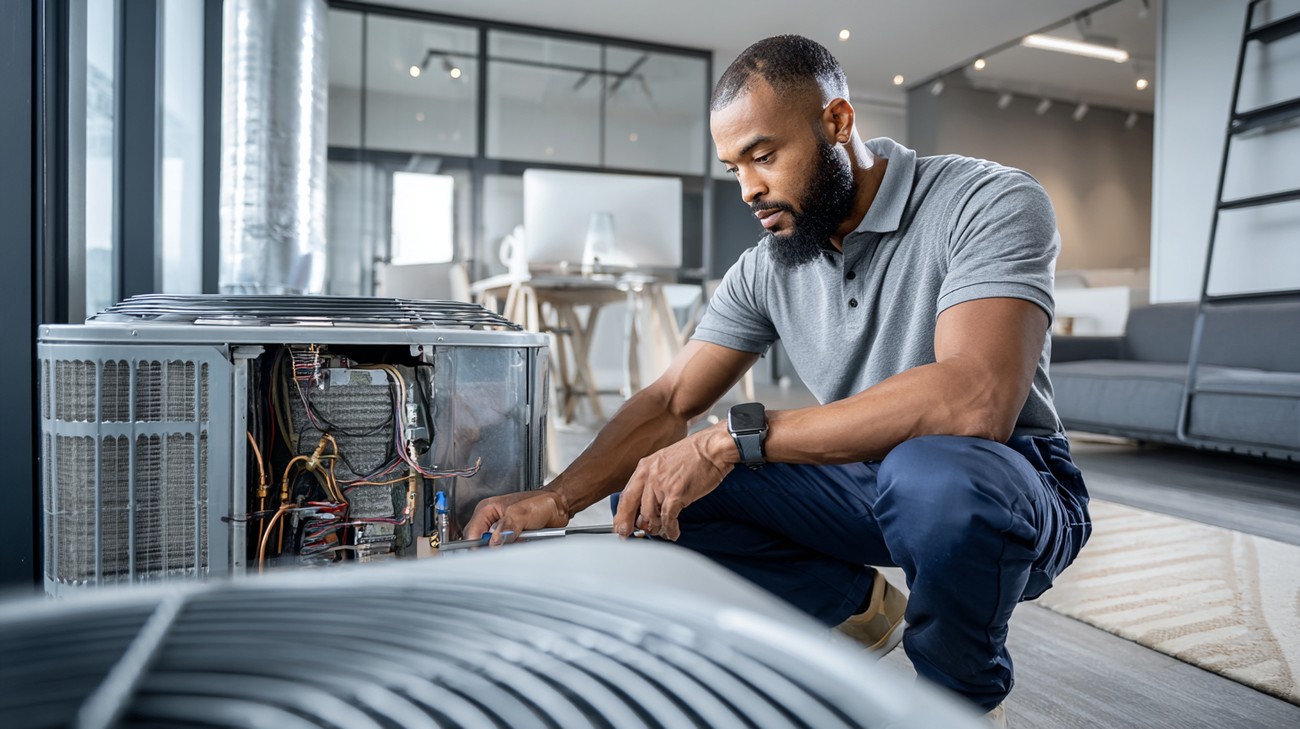
Frequently Asked Questions about Ac Leak Repair
What causes AC leaks?
AC leaks often result from several common issues. Over time, the vibration of the unit can cause the metal parts to wear against each other, leading to small holes or cracks where refrigerant can escape. Additionally, poor installation or maintenance can accelerate wear and result in leaks. Corrosion of metal components due to exposure to moisture or acids can also be a culprit. Understanding these common causes can help in preventing future leaks and knowing when to contact a professional for AC leak repair.
How is an AC leak repaired?
AC leak repair typically involves locating the source of the leak, whether it's in the refrigerant lines, coils, or elsewhere in the system. Once identified, a technician will often seal the leak using specialized equipment or replace the compromised parts entirely. After repairs, the system needs to be recharged with the correct amount of refrigerant to ensure optimal performance. It's crucial to hire a qualified technician for AC leak repair to ensure the long-term success and efficiency of the repair.
Can AC leaks be prevented?
While some degree of wear and tear is unavoidable, regular maintenance can significantly reduce the risk of AC leaks. This includes routine inspection of the refrigerant levels, coil cleaning, and ensuring that all connections and seals are intact. Catching issues early can often mitigate the extent of any leaks and prevent the need for more extensive AC leak repairs. Scheduling regular check-ups with a professional can keep your system running smoothly and efficiently.
How much does it cost to repair an AC leak?
The cost of repairing an AC leak can vary widely depending on the location and severity of the leak, as well as the make and model of your AC unit. Minor repairs might cost a few hundred dollars, while more extensive repairs could be significantly more expensive. It's always a good idea to get several quotes from different HVAC professionals when planning for an AC leak repair to ensure you're getting a fair price for the necessary work.
Is it safe to continue using my AC if it has a leak?
Using an AC with a leak is not recommended. Continuing to operate it can lead to further damage, not only to the AC unit itself but also to your home environment. A leaking AC can result in fluctuating temperatures and increased energy bills, as the system works harder to maintain the set temperature. More importantly, refrigerant leaks can be harmful to your health and the environment. Prompt AC leak repair should be a priority to avoid these risks.
How long does it take to repair an AC leak?
The time needed for an AC leak repair depends on the nature and extent of the leak. Minor leaks can often be repaired in a few hours, while significant ones might take a day or more, especially if parts need to be replaced. It's crucial for technicians to thoroughly check the entire system to ensure all leaks are addressed. Scheduling an appointment with your HVAC service provider can give you a better estimate based on your specific situation.
What happens if I ignore an AC leak?
Ignoring an AC leak can lead to several issues, including reduced cooling efficiency and increased energy costs. Over time, the continuous loss of refrigerant can cause the compressor to overheat and potentially fail, which is a costly component to replace. Additionally, prolonged exposure to refrigerant leaks can be harmful to health and the environment. Addressing an AC leak repair promptly is crucial to maintaining a safe and comfortable environment in your home.
Should I attempt to repair an AC leak myself?
While some home maintenance tasks can be DIY-friendly, AC leak repair is best left to professionals. AC systems are complex and require specialized tools and knowledge to diagnose and repair leaks correctly. Attempting a repair without proper expertise can result in further damage and potentially void any existing warranties on the unit. Hiring a certified HVAC technician ensures the repair is done safely and efficiently.
What are the environmental impacts of AC leaks?
AC leaks, primarily involving refrigerants, can have a significant environmental impact. Many refrigerants, especially older types, are potent greenhouse gases and can contribute to global warming if released into the atmosphere. Prompt repair of AC leaks is important not just for the efficiency of your system, but also for minimizing your environmental footprint. Upgrading to a modern AC unit that uses eco-friendly refrigerants can further reduce environmental impacts. ```

Troubleshooting Guide
When it comes to AC leaks, several common problems can arise, each with its own symptoms and causes. This guide will walk you through troubleshooting these issues, offering solutions and advice on when to call in a professional. Let's dive in!
1. Refrigerant Leak
Symptoms: Your AC isn't cooling efficiently, there's an unusual hissing noise, and you notice increased electricity bills.
Likely Causes: The system might have tiny holes or punctures in the refrigerant lines due to wear and tear, factory defects, or physical damage.
Step-by-Step Fixes:
- Switch Off the AC: Prevent further leakage by turning off the system.
- Inspect the Unit: Look for oily spots or frosting on the refrigerant lines.
- Check Connection Points: Tighten any loose connections using a wrench.
- Test for Leaks: Use a soap solution to check for bubbling along the lines, indicating leaks.
- Seal Minor Leaks: Use a refrigerant leak sealer to patch small holes temporarily.
When to Call a Professional: If the above steps don't resolve the issue, or if you suspect a significant leak, call a certified HVAC technician for repairs.
Prevention Tips: Schedule regular maintenance checks to identify and fix potential leaks early on.
2. Condensate Drain Blockage
Symptoms: You see water pooling around your indoor unit or notice a musty smell.
Likely Causes: Dust, dirt, and algae can build up in the condensate drain line, leading to blockages.
Step-by-Step Fixes:
- Turn Off the System: Ensure the AC is powered down before you start.
- Locate the Drain Line: Find the PVC pipe near your indoor unit.
- Clear the Blockage: Use a wet/dry vacuum to remove the blockage.
- Flush the Line: Pour a mixture of water and vinegar (1:1) into the drain line to hinder further growth.
- Inspect for Leaks: Once clear, check if water flows freely without leaks.
When to Call a Professional: If you're unable to clear the blockage or if you repeatedly experience this issue, a professional can provide a more thorough inspection and cleaning.
Prevention Tips: Regularly flush the condensate line with a vinegar solution to prevent buildup.
3. Evaporator Coil Issue
Symptoms: The AC is not cooling, with ice visible on the coils, or there's inadequate airflow.
Likely Causes: A dirty or clogged evaporator coil can restrict airflow and cause freezing.
Step-by-Step Fixes:
- Switch Off the AC: Prevent further icing by turning off the unit.
- Access the Coils: Remove the access panel to reach the coils.
- Clean the Coils: Use a coil cleaner spray to dissolve dirt and dust.
- Allow Time to Thaw: If ice is present, give the coils time to thaw completely.
- Restart the AC: Once clean, restart the AC and monitor for improvements.
When to Call a Professional: If cleaning the coils doesn't solve the problem, or the ice keeps returning, hire an expert to inspect for deeper issues.
Prevention Tips: Change your air filter regularly and keep return vents free of obstructions to maintain good airflow.
4. Frozen Evaporator Coil
Symptoms: Reduced airflow from vents, visible ice on indoor components, and the system runs continuously without proper cooling.
Likely Causes: Low refrigerant levels, restricted airflow, or a malfunctioning thermostat can cause coils to freeze.
Step-by-Step Fixes:
- Power Down the AC: Shut down the unit to prevent extra strain.
- Inspect Air Filter: Replace the air filter if it's dirty or clogged.
- Check Refrigerant Levels: Note symptoms of low refrigerant like bubbling noises.
- Monitor Thermostat Settings: Ensure it's set correctly and functioning.
When to Call a Professional: If the coil freezes again after these steps, you'll need a professional to address refrigerant or mechanical issues.
Prevention Tips: Regular maintenance and correct thermostat settings can keep your coils from freezing.
5. Dirty Air Filter
Symptoms: Poor airflow, reduced cooling efficiency, and increased energy consumption.
Likely Causes: A dirty air filter restricts airflow, leading to inefficient AC performance.
Step-by-Step Fixes:
- Identify the Filter Type: Note if it's a reusable or disposable filter.
- Remove the Filter: Turn off the AC and take out the filter.
- Clean or Replace the Filter: Wash reusable filters with water; replace disposable ones.
- Re-install the Filter: Ensure it fits snugly into the unit.
When to Call a Professional: Contact a technician if airflow issues persist after changing the filter.
Prevention Tips: Change or clean the air filter every 1-3 months, depending on usage and filter type.
6. Loose or Damaged Ducts
Symptoms: Uneven cooling across different rooms and higher utility bills.
Likely Causes: Ductwork can separate or develop cracks over time, leading to air leaks.
Step-by-Step Fixes:
- Inspect Visible Ducts: Look for gaps, holes, and loose fittings.
- Seal the Gaps: Use duct tape or mastic sealant to cover small holes.
- Adjust or Secure Loose Sections: Realign any misaligned ducts and secure them with supporting brackets.
When to Call a Professional: If air loss persists, or if ductwork is complex and hard to reach, enlist professional duct sealing services.
Prevention Tips: Have a professional inspect ductwork every few years to prevent leaks.


